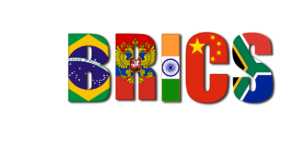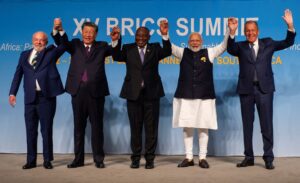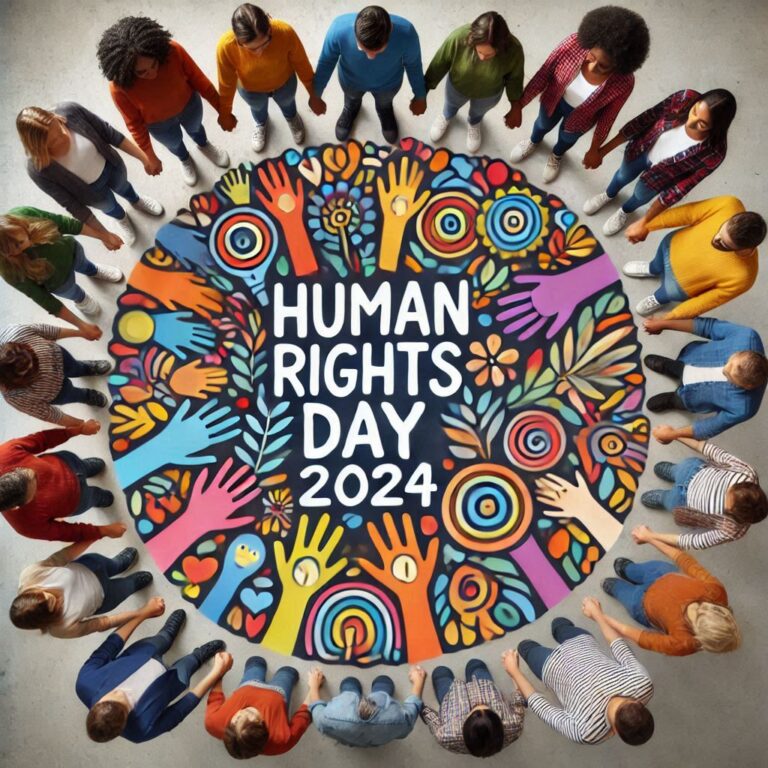BRICS: The Unparalleled Challenges for The US and European Alliance in 2024
1 . BRICS stands for Brazil, Russia, India, China, and South Africa. Originally identified to highlight investment opportunities, this intergovernmental organization has evolved into a geopolitical bloc. The BRICS countries meet annually at formal summits to coordinate multilateral policies. They emphasize non-interference, equality, and mutual benefit in their bilateral relations. Iran, Egypt, Ethiopia, and the United Arab Emirates joined the organization in 2024, expanding its reach. Together, the BRICS members represent about 30% of the world’s land surface and 45% of the global population. These nations are significant players in population, area, and GDP. They’ve also established initiatives like the New Development Bank and the BRICS Contingent Reserve Arrangement12

2 . The BRICS Alliance Serves Several Purposes:
- 1 . Economic Cooperation: BRICS countries collaborate on trade, investment, and economic development. They aim to strengthen their economies by sharing expertise and resources.
- Geopolitical Influence: By forming a bloc, BRICS nations enhance their collective influence in global affairs. They advocate for multipolarity and a more equitable world order.
- Development Initiatives: The New Development Bank (NDB), established by BRICS, funds infrastructure projects in member countries. It promotes sustainable development and reduces reliance on Western-dominated institutions.
- Cultural Exchange: BRICS fosters cultural understanding through art, education, and tourism exchanges. This promotes people-to-people connections.
- Political Dialogue: Regular summits allow leaders to discuss common challenges, such as climate change, terrorism, and cybersecurity.
Overall, BRICS seeks to create a fairer, more balanced international system while addressing shared concerns.

3. BRICS Significantly Impacts Global Politics in Several Ways:
- Multipolarity: By forming a bloc, BRICS challenges the dominance of Western powers. It promotes a multipolar world order where multiple centres of influence coexist.
- Economic Cooperation: BRICS countries collaborate on trade, investment, and development. Their combined economic strength influences global markets and policies.
- Geopolitical Influence: The alliance enhances its collective voice on international issues. BRICS leaders discuss climate change, terrorism, and cyber security, shaping global agendas.
- Development Initiatives: The New Development Bank (NDB) funds infrastructure projects, reducing reliance on Western-dominated institutions like the World Bank.
- Cultural Exchange: BRICS fosters people-to-people connections through art, education, and tourism, promoting mutual understanding.
4. The BRICS Alliance, Faces Several Geopolitical Challenges:
- Diverse Political Systems: The five-member countries have varying political systems. China is a one-party state, Russia has highly centralized governance, and Brazil, India, and South Africa are democracies with their unique challenges1.
- Ideological Differences: The alliance’s diverse ideological perspectives can hinder cohesive action. For instance, tensions arise from differing views on issues like the conflict in Ukraine and relations with the United States2.
- BRICS Plus: The inclusion of new members (such as Iran, Saudi Arabia, Egypt, the United Arab Emirates, and Ethiopia) under the “BRICS Plus” label may further complicate alignment and objectives2.
Despite these hurdles, BRICS continues to shape global politics and challenge existing norms
5. BRICS Primarily Focuses on Economic Cooperation and Political Influence, With Limited Involvement in Directly Addressing Regional Conflicts. However, Some Ways it Indirectly Impacts Conflict Resolution:
- Diplomatic Channels: BRICS summits provide a platform for leaders to discuss global issues, including regional conflicts. While they don’t mediate directly, their dialogue can influence diplomatic efforts.
- Shared Interests: BRICS members often have stakes in conflict-affected regions due to trade, energy, or security interests. Their cooperation can indirectly promote stability.
- Soft Power: Cultural exchanges and people-to-people connections fostered by BRICS can promote understanding and reduce tensions across borders.
- Economic Stability: By promoting economic growth and development, BRICS indirectly contributes to stability in conflict-prone areas.
6. The BRICS Alliance Played a Nuanced Nole in Specific Conflict Zones.
Libya: BRICS countries responded to the Libyan conflict with a mix of diplomatic efforts and non-coercive actions. Their involvement highlighted their commitment to a multi-polar world order1.
- Syria: In Syria, BRICS faced challenges. While they advocated for diplomacy, their responses varied. Some leaned toward power politics, emphasizing their distinct approach to global affairs1.
- Ukraine: BRICS members, except Russia, formally called for a peaceful resolution in Ukraine. Their stance reflected their commitment to stability and humanitarian norms2.
- South Sudan: BRICS engaged as active mediators, seeking peaceful solutions. Their emphasis on humanitarian and diplomatic approaches showcased their commitment to conflict resolution3.
Remember, BRICS responses range from cooperative multilateralism to neo-imperial unilateralism, reflecting their diverse perspectives
7. Recent Successes Where BRICS Has Played a Role in Conflict Resolution:
- Ukraine Crisis: While BRICS countries abstained from taking definite sides in the conflict, they consistently called for a peaceful resolution. Their emphasis on multipolarity and dialogue contributed to diplomatic efforts1.
- Israeli-Palestinian Issue: BRICS held an extraordinary virtual summit to address this longstanding conflict. Their unity and coordination showcased their growing influence in shaping the international landscape234.
- Resistance to Sanctions: During the Russian invasion of Ukraine, BRICS resisted Western-imposed sanctions on Moscow. This demonstrated their commitment to a more balanced world order5.
8. BRICS Faces Several Challenges in Conflict Resolution:
- Diverse Interests: Each member has distinct geopolitical interests, making consensus difficult. For example, China’s focus on economic growth contrasts with Russia’s assertive foreign policy.
- Ideological Differences: BRICS countries follow different political systems and ideologies. Balancing these divergent views can hinder cohesive action.
- Regional Conflicts: BRICS engages with regions like Syria and Ukraine, where conflicts are complex and deeply entrenched. Finding common ground is challenging.
- Limited Direct Influence: BRICS lacks direct military intervention capabilities. Its impact is primarily through diplomacy, economic cooperation, and soft power.
- Global Power Dynamics: BRICS competes with established powers like the United States and the European Union. Navigating this landscape requires strategic finesse.
Despite these hurdles, BRICS continues to shape global politics and contribute to conflict resolution effortsThe BRICS alliance, comprising Brazil, Russia, India, China, and South Africa, has drawn attention from the United States and its allies due to its growing geopolitical influence.
- A Counterbalance to Western Hegemony: BRICS aims to challenge the Western-led international order. As a consensus-based group, they seek an alternative world order. However, the extent of their agreement on this remains uncertain1.
- Normative Alliance: BRICS unites against historical Western domination. Their common enemy narrative shapes their norms and policies, emphasizing independence from Western institutions2.
- Economic Shift: The erosion of the U.S. dollar’s dominance in international trade and finance drives BRICS. Their collective economic strength challenges established norms3.
- Multipolarity: An expanded BRICS, including emerging powers from Africa, the Middle East, and Latin America, contributes to a trend away from U.S. hegemony4.
In summary, BRICS’ influence prompts strategic considerations for the U.S. and its allies. 1: Henry Tugendhat on the Geopolitical Impact of BRICS Expansion 2: Rising Powers and Global Order: BRICS and USA – The End of an Era 3: Impact of BRICS On Global Politics: Challenging The US-led Order 4: BRICS Expansion and Its Geopolitical Implications
9. BRICS Views U.S. Policies Through a Multifaceted Lens, Shaped by Their Own Geopolitical Interests and Global Positioning. Here are Some Perspectives:
- Competition and Rivalry: BRICS perceives the U.S. as a dominant global power. They often view U.S. policies as competitive and sometimes detrimental to their interests. For instance, U.S. sanctions or trade restrictions can impact BRICS economies.
- Unipolarity vs. Multipolarity: BRICS seeks a more multipolar world order, challenging the U.S.-led unipolarity. They critique U.S. unilateralism and advocate for a fairer distribution of power.
- Divergent Priorities: BRICS and the U.S. differ on issues like climate change, human rights, and regional conflicts. Their policies reflect these divergent priorities.
- Cooperation Opportunities: Despite differences, BRICS recognizes areas where cooperation with the U.S. is essential. These include global health, counterterrorism, and economic stability.
In summary, BRICS’ view of U.S. policies is nuanced, balancing competition, cooperation, and their own strategic goals.
10. Specific Areas of Tension Between BRICS and the U.S.:
- Trade Disputes: The U.S. accuses China of unfair trade practices, leading to tariffs on Chinese goods. In response, China has imposed tariffs on U.S. goods1.
- Geopolitical Rivalry: BRICS members share skepticism of the U.S.-led international liberal order. They perceive unipolarity as a threat to their interests, challenging established norms2.
- Institutional Growth: BRICS achieved significant institutional growth in 2015, which impacted U.S. global interests. This turning point intensified tensions3.
These factors contribute to the complex relationship between BRICS and the U.S. 1: All to know about BRICS and its impact on Africa and the USA 3: Explained: Why it’s time for the United States to develop a BRICS policy 2: BRICS Political and Geopolitical Challenges: A View from the South.
11. In Recent Years, BRICS Has Been Challenging Key Aspects of U.S. Global Leadership.
Diplomatic Front: BRICS has countered the U.S. strategy on Ukraine, particularly by opposing Western sanctions on Russia12.
- Economic Shift: BRICS aims to weaken the U.S. dollar’s dominance as the world’s default currency, challenging U.S. economic supremacy2.
- Growing Influence: As BRICS accelerates cooperation across various policies, it increasingly impacts global affairs, including U.S. interests3.
These developments highlight the evolving dynamics between BRICS and the U.S. 1: As BRICS cooperation accelerates, is it time for the US to develop a BRICS policy? 2: Explained: Why it’s time for the United States to develop a BRICS policy 3: BRICS cooperation accelerates: Is it time for the US to develop a BRICS policy?
12. The Relationship Between BRICS and the West Has Both Areas of Tension and Common Around. Some key points:
- Geopolitical Challenge: BRICS emerged as a reformist group challenging Western dominance over multilateral financial institutions after the 2008 Global Financial Crisis. Since then, it has taken on a geopolitical character, aiming to foster a more legitimate international system1.
- Diverse Interests: Despite competing interests among BRICS members, they share a vision of greater Global South representation. However, each member’s national strategy guides their actions, leading to both opportunities and challenges1.
- Energy Influence: With six of the world’s top oil producers, BRICS has an opportunity to influence global energy dynamics. It also diversifies partnerships in technology transfer, space research, and strengthening the BRICS’ New Development Bank (NDB)1.
- Global Financial Architecture: BRICS members seek reform of major international financial institutions, including the World Bank and International Monetary Fund. Their shortcomings hinder climate action in developing nations1.
In summary, BRICS and the West navigate convergent and divergent interests, impacting global politics and cooperation.
13. The Future of BRICS: Between Objectives and Challenges
As the BRICS bloc expands, efforts by BRICS policymakers to increase global use of non-dollar currencies—particularly the Chinese renminbi—are accelerating. While de-dollarization faces challenges, BRICS has kick-started efforts by settling oil and gas trade with local currencies instead of the U.S. dollar. By using the most commonly traded commodities—oil and gas—BRICS aims to reduce reliance on the dollar12. The alliance’s push for de-dollarization is significant, especially as it expands its membership and seeks alternatives to the dominant U.S. dollar3.: The Difficult Realities of the BRICS’ Dedollarization Efforts—and the Renminbi’s Role 2: BRICS: De-Dollarization Begins With Oil & Gas 3: Can an expanding Brics really offer a persuasive alternative to the US dollar?
14. BRICS recently expanded its membership by admitting four new members: Egypt, Ethiopia, Iran, and the United Arab Emirates. This expansion took effect on January 1, 20241. Additionally, Saudi Arabia has also joined BRICS, along with Argentina2. However, there is no indication that any European country is currently seeking to join BRICS.
Expansion of BRICS 2: Brics: What is the group and which countries have joined? – BBC
15. Joining BRICS Offers Several Benefits:
- Economic Cooperation: BRICS facilitates trade, investment, and economic growth among member countries. It provides access to a large market and potential partnerships.
- Geopolitical Influence: Membership enhances a nation’s global standing. BRICS collectively challenges Western dominance and advocates for multipolarity.
- Development Initiatives: The New Development Bank (NDB), established by BRICS, funds infrastructure projects. Joining can provide financial support for development.
- Cultural Exchange: BRICS promotes people-to-people connections, fostering understanding and collaboration in art, education, and tourism.
- Policy Coordination: Regular summits allow leaders to discuss common challenges, such as climate change, terrorism, and cybersecurity.
16. Remember that each country’s experience with BRICS varies, but these benefits highlight its significance. BRICS engages with its new members through various mechanisms:
- Diplomatic Dialogues: Regular summits and ministerial meetings provide a platform for new members to engage with existing BRICS countries. These dialogues cover a wide range of topics, from economic cooperation to global challenges.
- Economic Partnerships: BRICS facilitates economic ties by encouraging trade, investment, and joint projects. New members can benefit from access to a large market and financial resources.
- Capacity Building: BRICS shares expertise in areas like infrastructure development, technology, and sustainable practices. New members can learn from established BRICS countries.
- Cultural Exchanges: BRICS promotes cultural understanding through art exhibitions, academic exchanges, and tourism. New members contribute to this vibrant exchange.
17. Joining BRICS Offers Several Benefits:
- Economic Cooperation: BRICS facilitates trade, investment, and economic growth among member countries. It provides access to a large market and potential partnerships.
- Geopolitical Influence: Membership enhances a nation’s global standing. BRICS collectively challenges Western dominance and advocates for multipolarity.
- Development Initiatives: The New Development Bank (NDB), established by BRICS, funds infrastructure projects. Joining can provide financial support for development.
- Cultural Exchange: BRICS promotes people-to-people connections, fostering understanding and collaboration in art, education, and tourism.
- Policy Coordination: Regular summits allow leaders to discuss common challenges, such as climate change, terrorism, and cybersecurity.
18. BRICS Significant Initiatives
- New Development Bank (NDB): The NDB, capitalized at $100 billion, aims to finance infrastructure and sustainable development projects in BRICS countries and beyond. It provides an alternative to Western financial institutions like the IMF and the World Bank1.
- Contingency Reserve Arrangement (CRA): BRICS countries created a $100 billion CRA to provide liquidity protection during balance of payments problems. This arrangement enhances financial stability among member countries1.
- Reform of Global Institutions: BRICS seeks reforms in global institutions such as the United Nations (UN), World Trade Organization (WTO), World Health Organization (WHO), World Bank, and IMF. They advocate for a more equitable and inclusive global order2.
- South-South Cooperation: BRICS promotes economic collaboration among developing nations. Initiatives like the Belt & Road initiative complement the NDB’s efforts3.
In summary, BRICS continues to challenge the existing world order by promoting multipolarity and providing alternatives to traditional Western-dominated institutions.
What the New Bank of BRICS is All About | Brookings 2: BRICS seeks UN, WTO, WHO, World Bank, IMF reforms on 6 principles 3: An Evolving BRICS and the Shifting World Order | BCG
19. The Last BRICS Summit, Took Place in Johannesburg, South Africa, from August 22 to 2023, Had a Strong Focus on Various Areas of Cooperation Among BRICS Members. Some Key Themes Included:
- Combating the COVID-19 Pandemic: BRICS leaders discussed strategies for addressing the ongoing pandemic and its impact on member countries.
- Counter-Terrorism: The summit emphasized joint efforts to combat terrorism and enhance security cooperation.
- Commerce and Trade: Discussions centred around boosting economic ties, trade facilitation, and investment opportunities.
- Healthcare and Science: BRICS explored collaboration in healthcare research, technology, and scientific advancements.
- Education and Traditional Medicine: The importance of technical and vocational education, as well as traditional medicine, was highlighted.
- Environment and Sustainable Development: Leaders addressed environmental challenges and sustainable development goals.
- Micro, Small, and Medium Business Enterprises (MSMEs): The summit recognized the significance of supporting and developing these enterprises.
As for the main attraction, Chinese President Xi Jinping was notably absent from a highly-anticipated speech during the summit. Instead, his commerce minister delivered remarks directed toward the United States, sparking speculation and intrigue. Xi’s absence remains unexplained, adding an element of mystery to the event12. The 4 biggest moments from this week’s BRICS summit – CBS News 2: BRICS – Origin, Expansion, Challenges, BRICS Summit 2023 – Vajiram & Ravi
20. The next BRICS summit is expected to take place in Kazan, Russia, in October 2024. The specific dates are still being coordinated through diplomatic channels1.: Putin says next BRICS summit in Russia will be dedicated to establishing a fair world order.
If you enjoyed this article, please like and share it with your friends, and don’t forget to subscribe for more great content!
